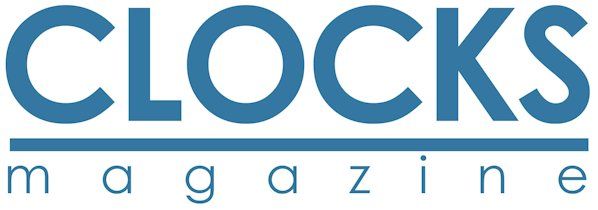Metonic cycle
Yesterday I received the April issue of Clocks and read the letter from Brian F Mitton about a calendar table in the arch of his longcase clock signed by Alan Fowlds of Kilmamock. I had never seen a table like it before, so its purpose was an interesting puzzle.
Ideally, another reader will have full information on it but, if not, I believe I can at least explain its function and use
Clocks with moon dials typically display the age of the moon (the number of days since the last new moon), starting at 0 for the new moon, reaching about 7 at the first quarter, 15 for the full moon, 22 for the last quarter, and starting over at 0 after 291/2 days for the next new moon. The table on the Fowlds clock assists in approximating the moon’s age for a given date, and thus knowing the current phase of the moon without a moon dial.
According to the Internet encyclopaedia Wikipedia (http://en.wikipedia.org/wiki/-Metonic_cycle), the moon’s phases recur at approximately the same time every 19 years. This is called the Metonic cycle. For example, the first step in finding the date for Easter in a given year is to calculate the year’s golden number by adding one to the remainder produced by dividing the year by 19.
The 19 numbers in a circle correspond to the 19 years of the cycle. If you know which year of the 19-year cycle you are in, you can use the table. For example, suppose you are in the 10th year of the cycle, on 5th April. First, count clockwise around the circle, starting with the ‘3’ until you reach the 10th number, which is ‘12’. Add to this the number listed for April (‘2’) and the day of the month from the clock’s date window, which in our example is ‘5’: 12 + 2 + 5 = 19. Therefore the moon is about 19 days old, or four days past full.
If the result of the sum is 30 or greater, then subtract 30. For example, the age of the moon on Christmas of the same year is about 12 + 10 + 25 - 30 = 17, two days past full.
The remaining question is how to determine which year of the 19 year cycle to use. To help determine this, I found a nasa website (http://sunearth.gsfc.nasa.gov/eclipse/-phase/phasecat.html) that lists the dates of moon phases for each century. Brian Loomes dates Alan Fowlds ‘1771-d1799’, so I looked at phases from the late 1700s.
Because the first number in the ring of 19 numbers is ‘3’, we know that on 1st January of the first year in the cycle, the moon should be about 3 + 1 + 1 = 5 days old.
The first discovery was that the table does not use a year’s golden number to specify its place within the Metonic cycle. The years 1767 and 1786 have a golden number of ‘1’, but on 1st January of those years the moon was only one day old (all dates gmt). The years 1770 and 1789 work better, as the moon was four days old on 1st January 1770, and five days old on 1st January 1789. If we assume that the first year of the cycle is 1770, then the examples above for the 10th year correspond to the year 1779. In that year, full moons occurred on 1st April and 23rd December, which fit the calculations.
Following this assumption that the cycle starts on 1770, 1789, 1808 ... the latest cycle began with 1998. This makes 2007 the tenth year of the cycle, so the examples apply to this year as well. This year full moons occur on 2nd April and 24th December. These are one day later than in 1779, which isn’t surprising, as the Metonic cycle is not exact: according to Wikipedia, the moon runs one day later on an average of every 219 years.
The phase calculations from this table aren’t perfect, but they are fine for the sort of planning for which moon dials were used, and have the added advantage of giving the phases for past and future dates as well.
I hope Mr Mitton enjoys this new feature of his clock as much as I enjoyed investigating it.
Larry Johnson, USA
|

